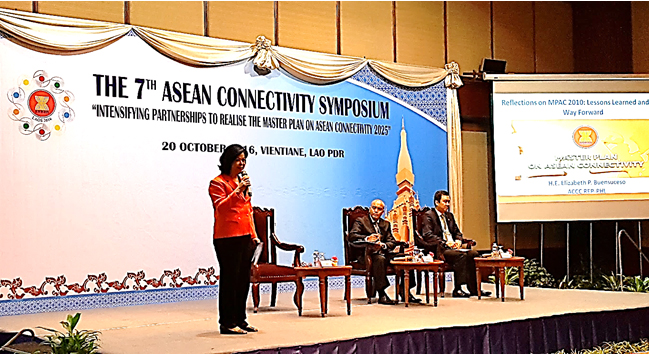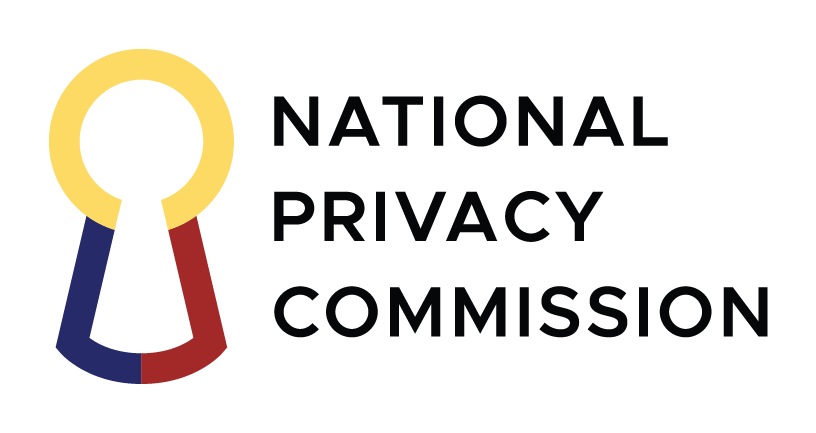
Philippine Permanent Representative to ASEAN, H.E. Elizabeth P. Buensuceso, in her capacity as the Philippine Representative to the ASEAN Connectivity Coordinating Committee (ACCC) gave a presentation at the 7th ASEAN Connectivity Symposium in Vientiane, Lao PDR.
Ambassador Buensuceso spoke on the topic, “Reflections on MPAC 2010: Lessons Learned and the Way Forward,” where she outlined the lessons learned from the implementation of the Master Plan on ASEAN Connectivity (MPAC) 2010 and suggested concrete and practical steps in implementing its successor document, the MPAC 2025. She underscored the need to socialize the MPAC 2025 to all stakeholders, including ASEAN governments at the regional and national level, external dialogue partners, multilateral organizations and the private sector, as well as the need to have effective and efficient coordination among the national focal points, alignment with respective national plans, and establishing a steady pipeline of projects to advance connectivity in the ASEAN region. She addressed ownership issues, the strengthening of institutional mechanisms, and the development of communication plans to cascade knowledge and ownership of MPAC 2025 to all stakeholders.
MPAC 2025 was launched by the Leaders of ASEAN at the ASEAN Summit in Vientiane in September 2016. It aims to achieve a seamlessly and comprehensively connected and integrated ASEAN that will promote competitiveness, inclusiveness, and a greater sense of Community. The new plan focuses on five strategic areas, namely Sustainable Infrastructure, Digital Innovation, Regulatory Excellence, Seamless Logistics and People-to-people Mobility.
The ASEAN Connectivity Symposium is an annual platform which enables stakeholders from ASEAN, External Dialogue Partners, relevant sectoral bodies, international institutions and the private sector to discuss concrete steps and articulate their perspectives on the implementation of the Master Plan on ASEAN Connectivity 2025 (MPAC 2025) through a Public-Private Sector consultative process. The Symposium brought together approximately 150 government officials, researchers and the private sector from ASEAN and Dialogue Partner countries as well as international organizations. END

